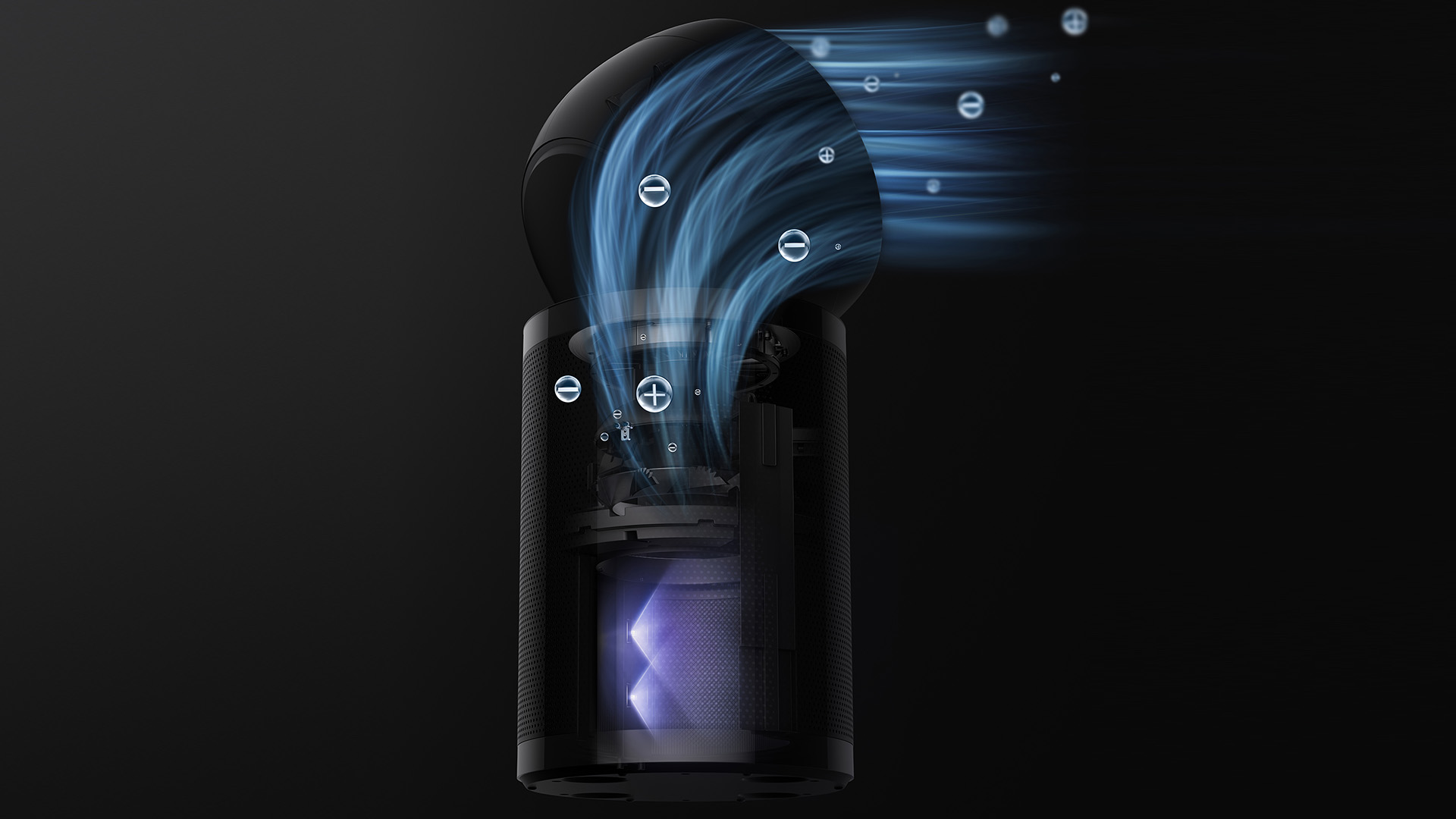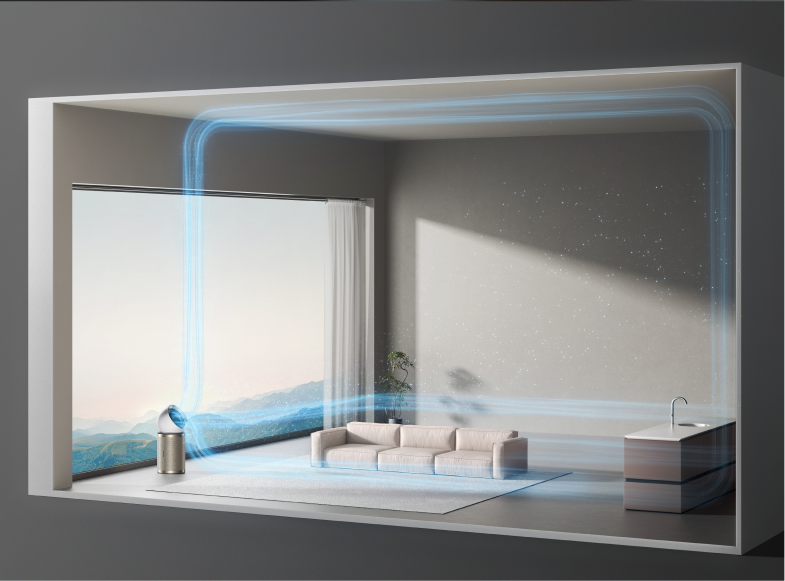![]()
Clean air is good for your health, and it’s essential to have pure indoor air to live healthily and protect yourself from health issues. An air purifier can help you achieve that as it’s specially designed to filter dirty air and remove pollutants from it. In this blog, we will answer some of the most common user questions, like how to use an air purifier, whether you can use an air purifier with windows open, or as a fan, in detail. Dreame is all about offering user-friendly air purification solutions, so check out the air purifier tips to effectively improve air quality.
Table of Content
- Tip 1. Balance Air Purifier Use with Open Windows
- Tip 2. Move Essential Oils Away From Your Air Purifier
- Tip 3. Pair Your Air Purifier with a Fan for Enhanced Airflow
- Tip 4. Run Your Air Purifier Continuously (24/7)
- Tip 5. Adjust Your Air Purifier for Specific Situations
- Tip 6. Strategize Air Purifier Placement in Multi-Room Homes
- Tip 7. Daily Clean and Maintain Your Air Purifier
Tip 1. Balance Air Purifier Use with Open Windows
Have you ever wondered if you can use an air purifier with the windows open? Yes, you can, but there are certain points to consider. Air purifiers are designed for closed spaces to filter indoor air and trap contaminants. However, you may keep your windows open to ventilate and allow odors to escape. Yet, according to recent studies, air purifiers can reduce PM2.5 with windows slightly open, depending on how good the outdoor air quality is.
If you are to open your windows, use purifiers designed for larger rooms and for smaller spaces, and keep your windows closed for better results. Position the purifier away from windows to avoid pulling in unfiltered outdoor air. Ideally, you should balance purifier use with periodic ventilation when outdoor air quality is good.

Tip 2. Move Essential Oils Away From Your Air Purifier
Do not use essential oils in an air purifier, as standard purifiers, especially those with HEPA filters, are not designed to handle essential oils, which can clog and damage filters. You should use a separate diffuser alongside the purifier for oils. Keep them apart to prevent scent from interfering with the purifier. Avoid using low-quality oils that may release synthetic toxins into the air. You are advised to check the purifier’s manual for oil compatibility to avoid damage.
Tip 3. Pair Your Air Purifier with a Fan for Enhanced Airflow
Suppose you’re wondering whether an air purifier can double as a fan. In that case, an air purifier’s primary job is filtration, meaning it pulls in air to clean it of pollutants and then releases purified air. While this process does create some airflow, it’s usually gentle circulation, designed to draw air through its filters, not to cool a room. A traditional fan, on the other hand, is built for cooling; it moves a large volume of air rapidly to create a breezy, cooling effect.
For optimal air quality and comfort, it is recommended pairing your air purifier with a separate fan. Directing the fan’s airflow towards your air purifier’s intake can significantly enhance its efficiency, helping it capture pollutants more effectively by guiding more dirty air into the filtration system.
However, some innovative devices, like the Dreame air purifier, offer more versatility. With its dual-way air outlets (upward and forward), it can indeed function as an air purifier, a circulation fan, or even just a fan on its own. Additionally, it offers the benefit of warming the air on a chilly day, making it a truly multifunctional addition to your home.

Tip 4. Run Your Air Purifier Continuously (24/7)
Running your air purifier continuously, 24/7, is not only safe for the device but also highly recommended for maintaining consistently clean and healthy indoor air quality. Pollutants like dust, pet dander, volatile organic compounds (VOCs), and allergens are constantly being introduced into your home, even when you’re not actively doing anything.
Leaving your air purifier on continuously ensures it can capture these particles as they appear, preventing them from accumulating in your environment. This is especially beneficial when you’re away from home, as it ensures you return to a space with cleaner, fresher air, ready for you to enjoy. Consistent operation is key to truly optimizing your indoor air.
Tip 5. Adjust Your Air Purifier for Specific Situations
Your air purifier shouldn’t be set on a single setting, as different activities introduce varying types of pollutants. When cooking or frying, increase the fan speed to manage smoke and odors. Similarly, during heavy cleaning, put the fan speed to maximum to capture dust and allergens. You must be careful not to run the purifier on a higher setting continuously during peak pollen season.
Modern air purifiers automatically adjust their speed, so consider Dreame air purifiers, which offer multiple modes suitable for various situations and can automatically adjust according to the environment.

Tip 6. Strategize Air Purifier Placement in Multi-Room Homes
If you have a large house with multiple rooms and only one or a few purifiers, you need to place them strategically to improve indoor air quality effectively. Place the purifier in the room where the most time is spent, e.g., the bedroom at night or the living room during the day. Dreame air purifier features directional airflow, which automatically detects your body movements and sends filtered air towards you.
Avoid Blocking Your Air Purifier’s Airflow
Do not place the air purifier in the corner, as it is designed to purify in open spaces and should be positioned at least 12-18 inches away from walls or furniture to ensure unobstructed airflow. You should avoid corners, cramped spaces, or areas blocked by objects like plants or decor.
However, the Dreame AirPursue PM20‘s air intake surrounds the body 360 degrees and allows it to operate at maximum efficiency regardless of its placement.
Tip 7. Daily Clean and Maintain Your Air Purifier
Air purifier maintenance is important. While you may need to replace the air filter periodically, certain parts of the purifier can accumulate dust and debris, which can affect its performance and lifespan.
- You should regularly clean the pre-filter if it’s washable and wipe down the exterior casing.
- Gently clean air quality sensors (if accessible) with a dry cloth or brush, as dust accumulation can lead to inaccurate readings and inefficient operation.
- Always refer to the specific model’s manual for detailed cleaning instructions.
Conclusion
Air purifiers are essential for maintaining suitable air quality inside your home. They are designed to filter air and trap pollutants. They cannot be used as a fan or with essential oils, as they may clog the filters. Interested in buying an air purifier? Check out Dreame air purifiers to learn more.
More FAQs About Air Purifier Usage
Q: How often should I replace my air purifier filter?
You should replace your purifier filter every 6 to 12 months, depending on your usage. For Dreame air purifiers, follow Dreame’s guidelines for proper maintenance.
Q: Can I use a diffuser and an air purifier together?
Yes, you can use a diffuser and an air purifier simultaneously. You should place them apart to preserve diffuser scents.
Q: Can air purifiers help with pet allergies?
Air purifiers are designed to capture pet dander, dust, and odors, which makes your indoor air clean, relieving your allergies. Place the purifier in the middle of the room where you keep your pets.
Q: How often should I check my air quality sensor or display?
If your air purifier features an air quality sensor or display, it’s a great habit to check it regularly. You don’t need to stare at it constantly. Still, a glance a few times a day, or when you notice changes in your indoor environment (like cooking odors or after cleaning), can help you understand your air quality and ensure your purifier is set to the appropriate fan speed.
Q: Does indoor humidity affect air purifier performance?
While moderate humidity is safe, high levels of humidity can impact the lifespan of filters, especially HEPA filters, as moisture can encourage mold growth on trapped particles.
References